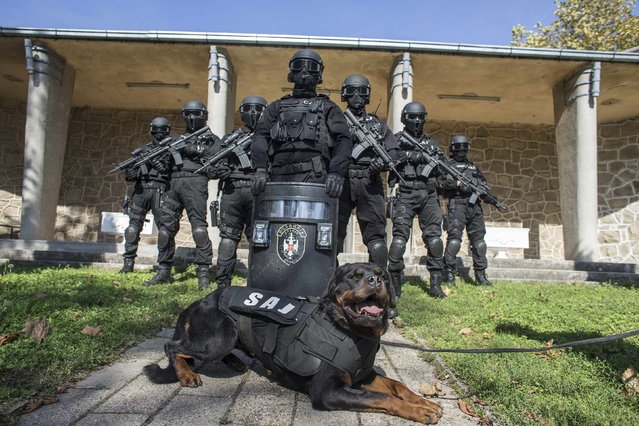
Serbian police officers of the Special Anti-Terrorist Unit pose for a picture in their base outside Belgrade October 8, 2014. When the killing of an unarmed black teenager by a white policeman in Ferguson, Missouri, in August sparked sometimes violent protests, the response of police in camouflage gear and armoured vehicles wielding stun grenades and assault rifles seemed more like a combat operation than a public order measure. Some U.S. police departments have recently acquired U.S. military-surplus hardware from wars abroad, but there are many law enforcers around the world whose rules of engagement also allow the use of lethal force with relatively few restrictions. But for every regulation that gives police wide scope to use firearms, there is another code that sharply limits their use. In Serbia, police may use measures ranging from batons to special vehicles, water cannon and tear gas on groups of people who have gathered illegally and are behaving in a way that is violent or could cause violence, but they may use firearms only when life is endangered. (Photo by Marko Djurica/Reuters)

Italian Carabinieri pose in front of St. Peter's Basilica as a Carabinieri helicopter flies overhead, in Rome November 12, 2014. In Italy, police and the paramilitary Carabinieri follow the same guidelines, which say that the use of weapons is allowed only in the line of duty, when it is an “unavoidable necessity to overcome resistance, stop violence, or prevent a (serious) crime”, and that the response must be proportionate to the situation. (Photo by Alessandro Bianchi/Reuters)
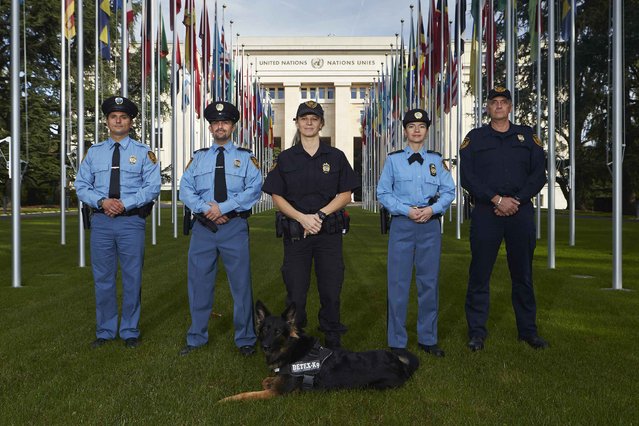
Members of the United Nations security forces pose in front of the U.N. European headquarters in Geneva October 20, 2014. U.N. police in Geneva follow the local cantonal police rules, which say that “the use of weapons, proportionate to the circumstances, is authorised as a last resort” but should “avoid serious injury whenever possible”, and that “the use of a firearm is preceded by a warning – if circumstances permit”. The United Nations Office in Geneva is considered ex-territorial and is not under the jurisdiction of the host country Switzerland. (Photo by Denis Balibouse/Reuters)
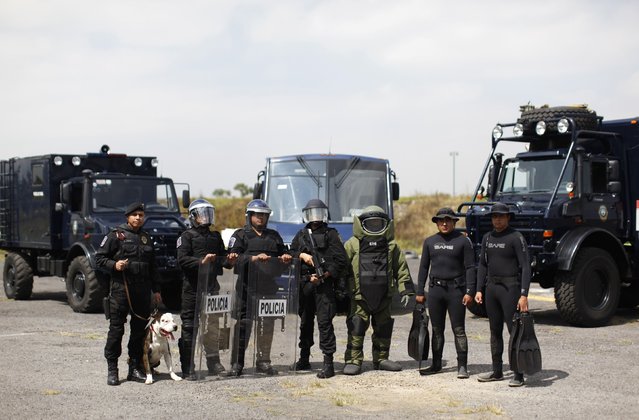
Members of the Task Force for Mexico City pose for a photograph at their base in Mexico City October 15, 2014. In Mexico, “when violent action by a crowd cannot be deterred, a scale of force will be applied progressively consisting of 1. verbal persuasion or deterrence 2. reduced physical movements 3. use of non-lethal incapacitating weapons, and 4. use of firearms or lethal force”. (Photo by Claudia Daut/Reuters)
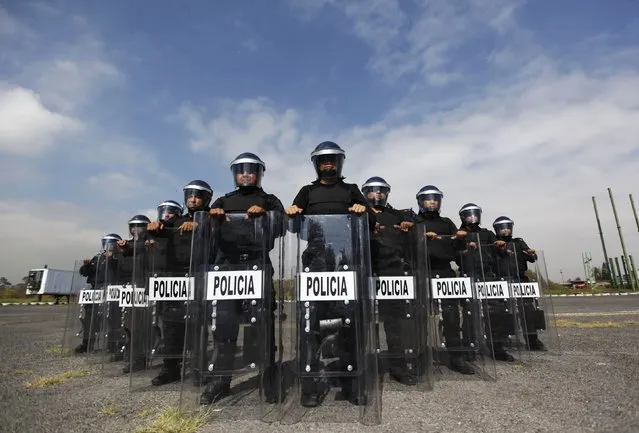
Members of the Task Force for Mexico City pose for a photograph at their base in Mexico City October 15, 2014. (Photo by Claudia Daut/Reuters)
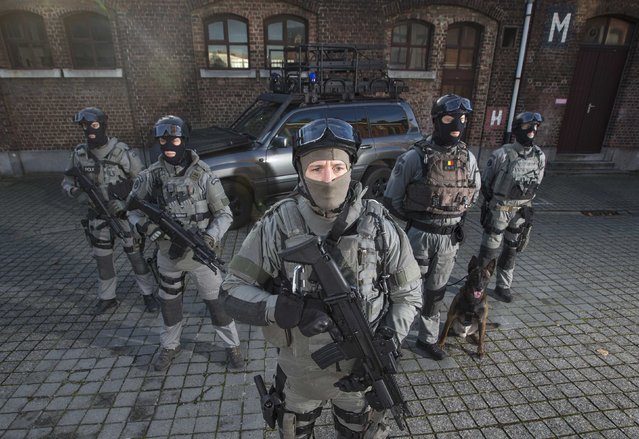
Members of Belgium's special forces pose for pictures at their headquarters in central Brussels November 24, 2014. Human rights monitors say police in Belgium are legally entitled to use proportionate force, after a warning, where there is no other means to achieve a legitimate objective. They say police may use firearms in self-defence, to confront armed perpetrators, or in defence of persons or key facilities, but never for crowd control. (Photo by Yves Herman/Reuters)

Members of the Philippine National Police Special Weapons and Tactics (SWAT) team pose for a picture outside a police station in Manila September 15, 2014. (Photo by Romeo Ranoco/Reuters)

Malaysia's public order police, the Federal Reserve Unit (FRU), pose for photographs wearing riot control equipment at their headquarters in Kuala Lumpur November 20, 2014. In Malaysia, the FRU are only permitted to use firearms in cases where the protesters are using firearms. Firearms have not been used in the 59 years since the FRU was formed. (Photo by Olivia Harris/Reuters)
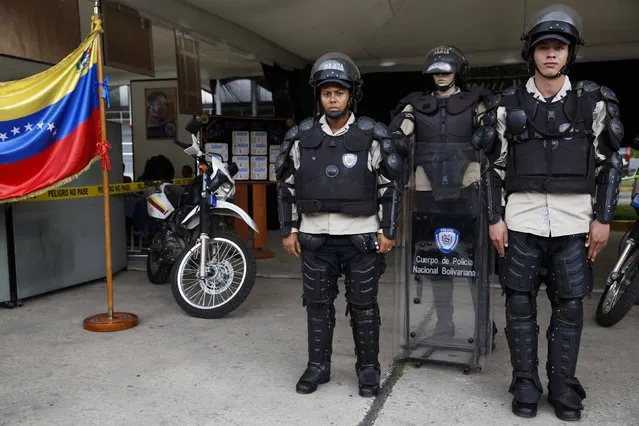
Venezuela's national police officers Bello (R) and Bogado pose for a picture with their riot equipment, next to a mannequin in uniform during a government Christmas fair in Caracas November 13, 2014. In Venezuela, no firearms are to be carried or used for control of peaceful demonstrations. When there is a threat to order, and other methods of conflict resolution have failed, police are instructed to warn crowds or demonstrators that there will be a “progressive, differentiated use of force”. Measures are to be taken to avoid harming children, the elderly and other vulnerable groups, and no force is to be used on those who avoid violence or are withdrawing from the scene. (Photo by Carlos Garcia Rawlins/Reuters)
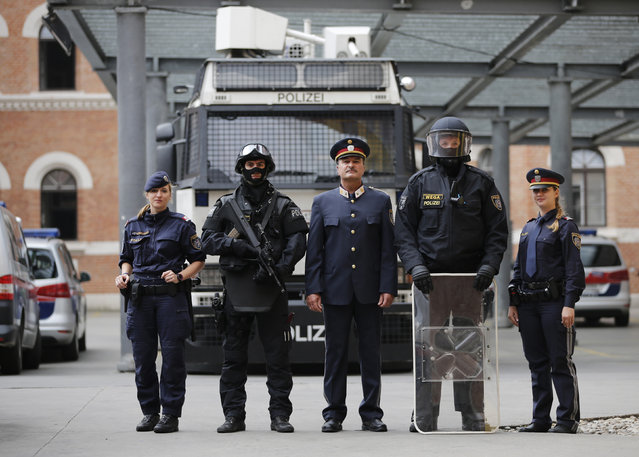
Austrian police officers pose in various uniforms in front of a water cannon at their headquarters in Vienna October 8, 2014. The uniforms include (L to R) light demonstration uniform, full combat adjustment for life threatening mission including gun (not used for riots in Austria), normal daily life uniform of commander, uniform of riot police officer, and normal uniform of police officer. In Austria, the use of lethal force is permitted to tackle rioting or to detain a dangerous suspect, but only when less dangerous methods “appear inappropriate or have proved to be ineffective”, and with the aim of avoiding serious injury where possible. The use must be proportionate, and be preceded by a warning. (Photo by Leonhard Foeger/Reuters)
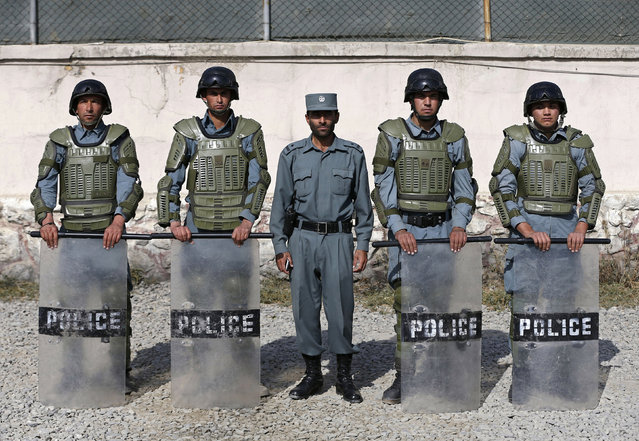
Afghan anti-riot policemen (R-L) Habib, 21, Sayed Rahman, 22, Mohammad Nabi, 22, Momin Khan, 22, and Abdul Ali, 25, pose for photo at their base in Kabul October 12, 2014. In Afghanistan, “the police can use weapons or explosives against a group of people only if they it has ... disturbed security by means of arms, and if the use of other means of force ... has proved ineffective”. Afghan police are required to give no fewer than six warnings – three verbal and three warning shots – before using force in this situation. (Photo by Omar Sobhani/Reuters)
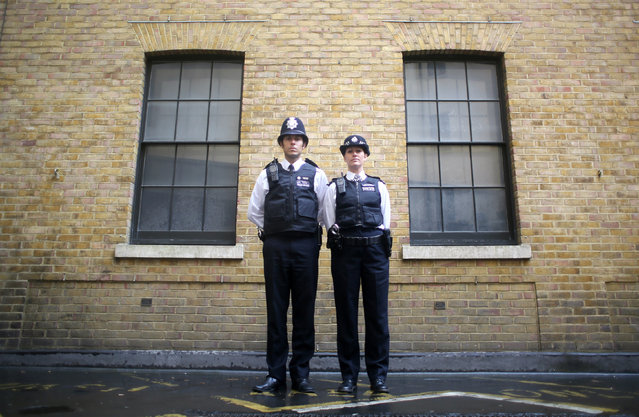
Police constables Ben Sinclair and Karen Spencer pose for a photograph wearing their Metropolitan Police beat uniforms, in London, October 9, 2014. In Britain, “lethal or potentially lethal force should only be used when absolutely necessary in self-defence, or in the defence of others against the threat of death or serious injury”. (Photo by Paul Hackett/Reuters)
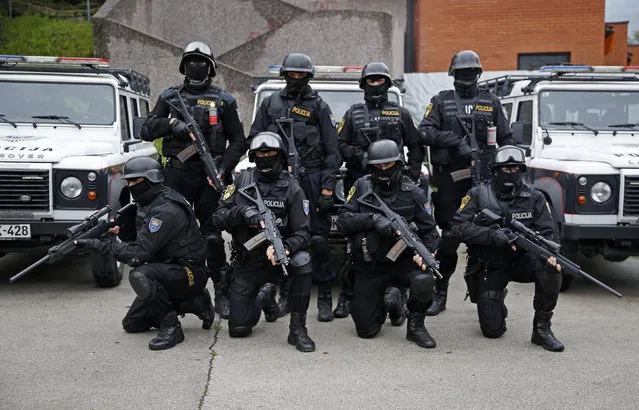
Members of Special Police Support Unit pose for photo in front of their base in central Bosnian town of Zenica, October 3, 2014. In Bosnia, police are permitted to use force ranging from batons to chemical irritants, water cannon, “binding agents, special firearms and explosive devices”, following a warning, but only when other methods of control have proved ineffective, and not against the young, old or disabled unless these use firearms. The method must be “proportional to the resistance or violence coming from the person on whom the force is used”. (Photo by Dado Ruvic/Reuters)
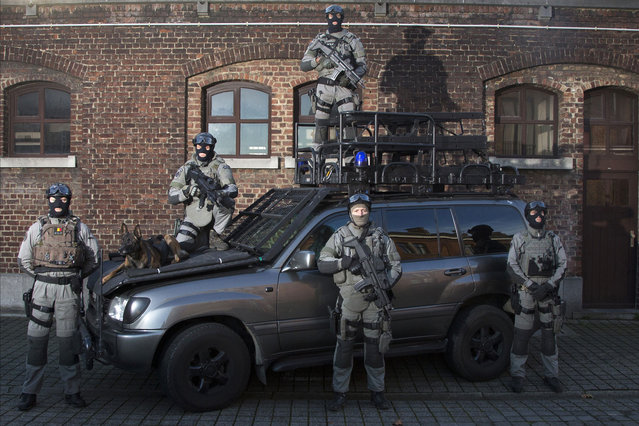
Members of Belgium's special forces pose for pictures at their headquarters in central Brussels on November 24, 2014. Human rights monitors say police in Belgium are legally entitled to use proportionate force, after a warning, where there is no other means to achieve a legitimate objective. They say police may use firearms in self-defense, to confront armed perpetrators, or in defense of persons or key facilities, but never for crowd control. (Photo by Yves Herman/Reuters)
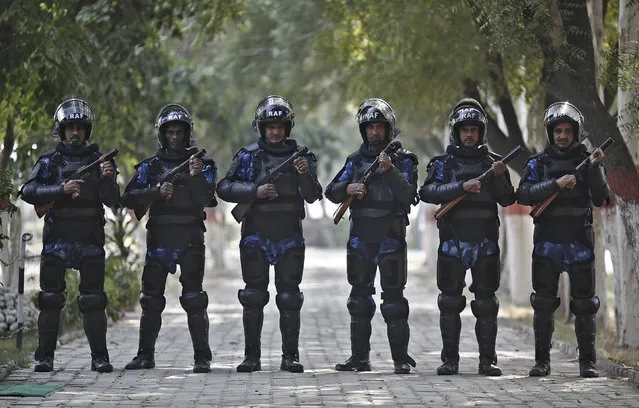
India's Rapid Action Force (RAF) personnel pose for pictures inside their base camp in New Delhi November 6, 2014. In India, the RAF are called on for violent disorder that the police are unable to contain. They require an on-the-spot magistrate's consent and must issue a warning before each escalation of the use of force, from verbal warning to water cannon and tear gas, then to rubber bullets or baton rounds, and then to firearms. (Photo by Adnan Abidi/Reuters)
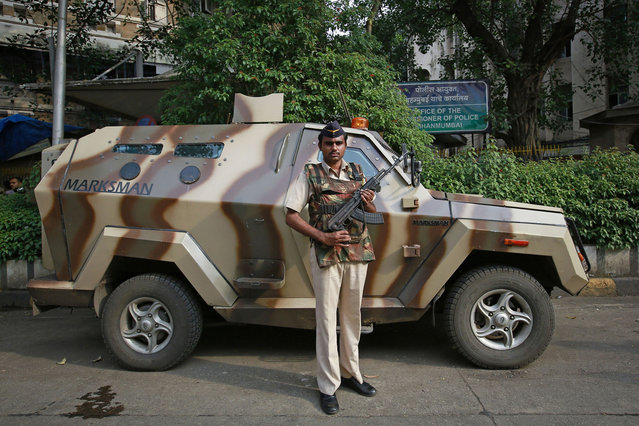
A Mumbai police constable poses as he stands guard next to an armored vehicle outside the police commissioner's office in Mumbai on October 1, 2014. In India, the Rapid Action Force (RAF) are called on for violent disorder that the police are unable to contain. They require an on-the-spot magistrate's consent and must issue a warning before each escalation of the use of force, from verbal warning to water cannon and tear gas, then to rubber bullets or baton rounds, and then to firearms. (Photo by Danish Siddiqui/Reuters)
27 Nov 2014 14:53:00,
post received
0 comments
